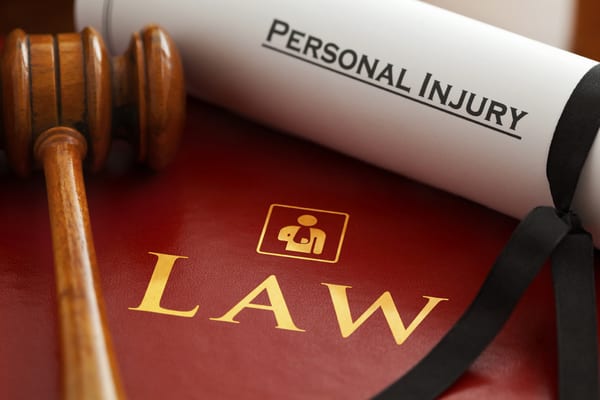
Minnesota has the highest proportion of serious multi-vehicle car accidents in the country. At the same time, the Gopher State also has one of the lowest auto insurance minimum requirements in the country. So, if the collision involves catastrophic injuries, there is a good chance the tortfeasor (negligent driver) may not have enough insurance coverage to make good on all losses.
That’s especially true regarding pedestrian accidents, motorcycle crashes, and large vehicle collisions. These wrecks often involve wrongful death claims.
In some cases, the tortfeasor has additional umbrella insurance coverage. But in most cases, a car accident attorney in Buffalo, MN looks for a vicarious liability theory. Fortunately, Minnesota laws are very broad in this area. So, there is usually an alternative source of compensation available. That source is usually a well-established company with deep pockets.
Some Employer Liability Theories in Minnesota
Events like truck wrecks, bus wrecks, Uber wrecks, and taxi wrecks often involve the respondeat superior rule. Under this legal doctrine, employers are legally responsible for the negligent acts of their employees. This rule makes sense. Employers are usually in the best position to prevent wrecks from happening. If they fail to do so, more accidents will probably follow the case at bar. So, a car accident attorney in Buffalo, MN needs to step in.
The respondeat superior rule has two basic prongs, and both of them are defined in broad, victim-friendly terms:
- Employee: We normally think of employees as they are defined in tax law. In that realm, an employee is someone who receives a regular paycheck and has that legal designation. But negligence law is different. In this context, any person the employer controls is an employee. That control could be dictating the driver’s work schedule or beginning and ending points.
- Scope of Employment: Once upon a time, only regular workers performing their regular duties acted within the scope of employment. If a delivery driver made a side trip to the store and caused a wreck, respondeat superior usually did not apply. But today, the scope of employment prong is much broader. Any act that benefits the employer in any way is within the scope of employment. That could include driving a vehicle which bears the company logo.
Additionally, the crash must be foreseeable. If a worker breaks into the parking lot after hours, steal a car, and causes a crash, these events are not foreseeable.
In the unlikely event that respondeat superior does not apply, there are other employer liability theories. These doctrines include negligent hiring and negligent supervision. These theories also apply in intentional tort cases, such as assault and theft.
Car Accident Attorneys in Buffalo, MN and Dram Shop Liability
Many people are extremely concerned about the number of drunk driving crashes. The law enforcement crackdown on DUIs has lasted more than twenty years now. Yet alcohol still causes almost a third of the fatal crashes in Wright County. The solution may lie in taking a step back and looking at the big picture.
Instead of exclusively focusing on individual “drunk drivers,” Minnesota law rightly looks at the source of these crashes. Minnesota has one of the broadest dram shop laws in the country. Commercial alcohol providers are liable for damages if they illegally sell alcohol, and the customer later causes a car crash. Illegal sales include:
- After-hours transactions,
- Minors, and
- Obviously intoxicated persons.
In the first two areas, victim/plaintiffs typically use direct evidence. After all, a person is either older or younger than 21. As for obviously intoxicated persons, victim/plaintiffs may use circumstantial evidence. Such evidence includes slurred speech, bloodshot eyes, and unsteady balance.
In some cases, Minnesota’s dram shop law might also apply to party hosts who illegally provide alcohol to their guests. In other cases, an alternative theory, like negligent undertaking, may be available.
Owner Liability in Buffalo
The idea behind this theory is a little like respondeat superior. By doing something like withholding the keys, a vehicle owner is in the best position to prevent a car crash. Negligent entrustment applies if the owner knowingly allows an incompetent driver to borrow a motor vehicle. Evidence of incompetence includes:
- A poor driving record, such as multiple at-fault accidents or a prior safety suspension,
- Invalid or no drivers’ license,
- Allowing an intoxicated, fatigued, or other impaired person to drive the vehicle, and
- Driving in violation of license restrictions (e.g. with glasses or only during the day).
Because of the Graves Amendment, commercial negligent entrustment cases work a bit differently. Vehicle rental companies are immune from negligent entrustment actions if they are in the vehicle rental business and the owner or agent was not otherwise negligent.
Minnesota is a modified joint and several liability state. So, if there are multiple responsible parties, the judge usually apportions damages among them base don their percentage of fault. These damages usually include compensation for economic losses, such as medical bills, and noneconomic losses, such as pain and suffering.
Work With a Tough Lawyer
The tortfeasor may not be the only responsible party in a negligence case. For a free consultation with an experienced car accident attorney in Buffalo, MN, contact Carlson & Jones, P.A. Home and hospital visits are available.

